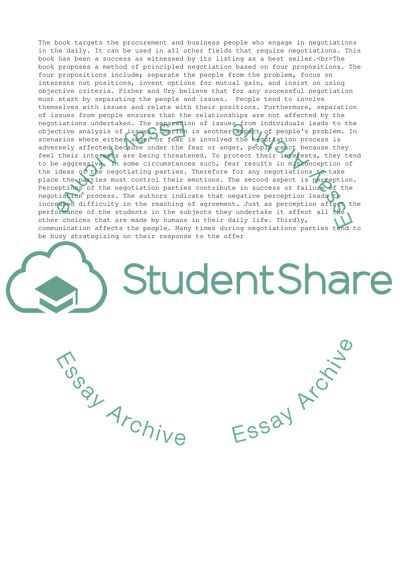Cite this document
(“Fisher book Getting to Yes Report/Review Example | Topics and Well Written Essays - 1250 words”, n.d.)
Fisher book Getting to Yes Report/Review Example | Topics and Well Written Essays - 1250 words. Retrieved from https://studentshare.org/management/1631541-fisher-book-getting-to-yes
Fisher book Getting to Yes Report/Review Example | Topics and Well Written Essays - 1250 words. Retrieved from https://studentshare.org/management/1631541-fisher-book-getting-to-yes
(Fisher Book Getting to Yes Report/Review Example | Topics and Well Written Essays - 1250 Words)
Fisher Book Getting to Yes Report/Review Example | Topics and Well Written Essays - 1250 Words. https://studentshare.org/management/1631541-fisher-book-getting-to-yes.
Fisher Book Getting to Yes Report/Review Example | Topics and Well Written Essays - 1250 Words. https://studentshare.org/management/1631541-fisher-book-getting-to-yes.
“Fisher Book Getting to Yes Report/Review Example | Topics and Well Written Essays - 1250 Words”, n.d. https://studentshare.org/management/1631541-fisher-book-getting-to-yes.


